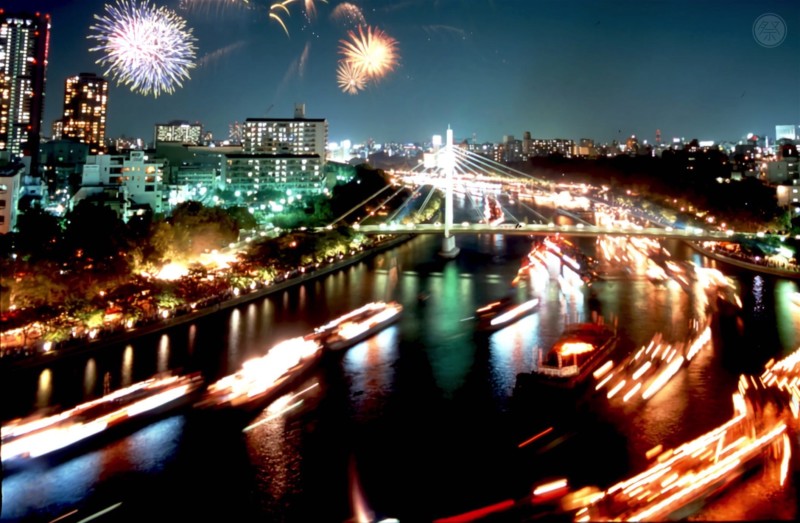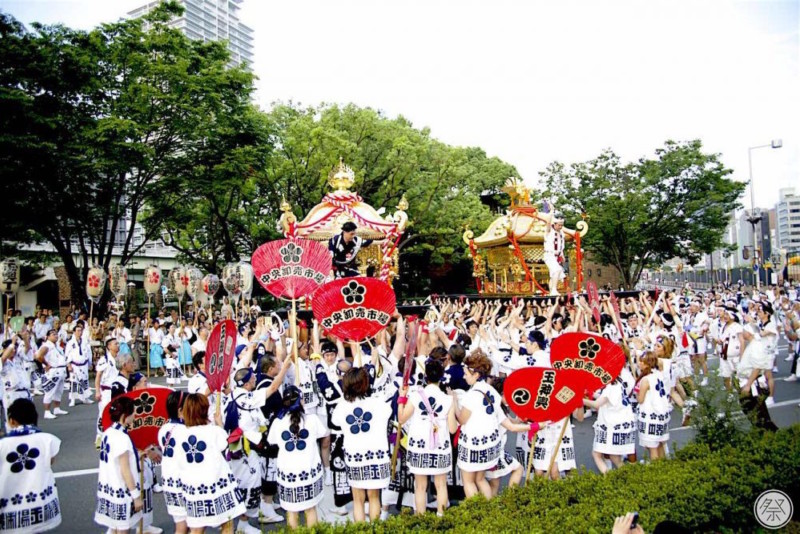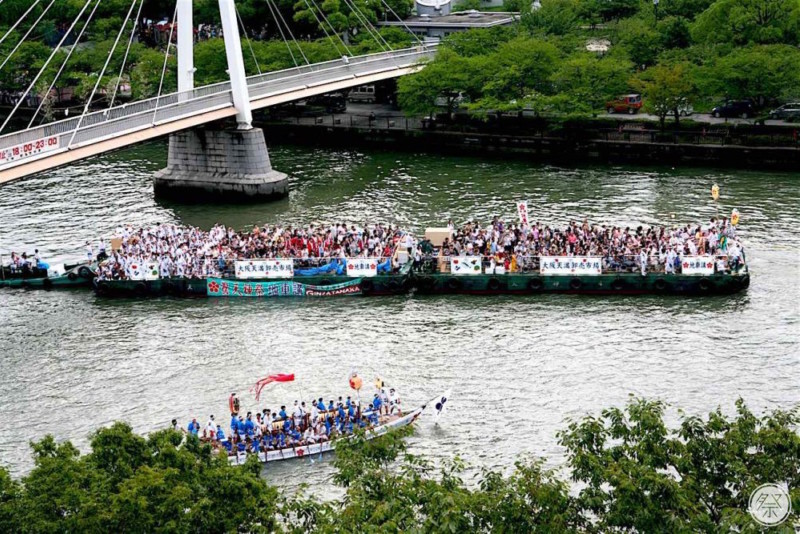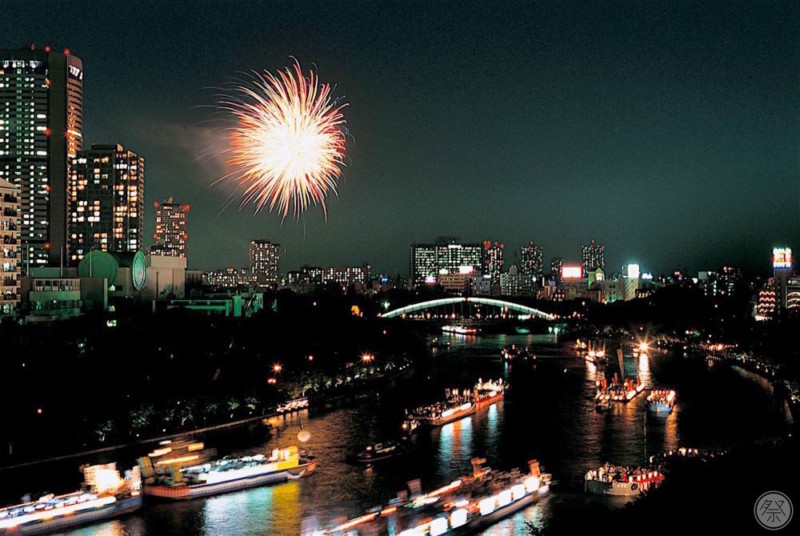Osaka Tenmangu Shrine was built in the late Heian period during the 3rd year of Tenryaku era (949 AD), enshrining Sugawara no Michizane as its deity. The Tenjin Matsuri is a major annual summer festival of the Osaka Tenmangu Shrine, held to ward off pestilence and wish for perfect health and peace for the city's citizens. The festival has a history of over 100 years, and it became famously known as one of Japan's 3 largest festivals since the middle Edo period. It attracts a total of over a million attendees during its two days.
It is said that Tenjin Matsuri has its origins in the sacred "Hokonagashi" rite that began in the year 951. In "Hokonagashi," a sacred hoko (ancient spear) is floated down Okawa river near the Tenmangu to determine where on the riverbank it would wash up to. At that location they will then erect a Otabisho (where the divine spirit will take a rest) of that year.
"Rikutogyo" (land procession) and "Funatogyo" (boat procession) are two main events of the Tenjin Matsuri today. They began as processions held by the local Ujiko (people born on land protected by the shrine's deity) once a year in order to show the festival deity Sugawara no Michizane's holy spirit how peaceful and happy the people are. In Rikutogyo, a procession of 3,000 parade through the city with the gorgeously decorated Gohoren (a portable mikoshi shrine decorated with a phoenix at the top). The Funatogyo parades upstream from Tenjinbashi bridge, and in a unique way, a separate procession boat comes from upstream to greet the divine. Approximately 12,000 people attend the boat parade. Fireworks are lit as offerings during the boat procession at night, creating a truly mystic sight.


The "Rikutogyo" that departs from Osaka Tenmangu Shrine at 3:30 pm on July 25th is a large parade consisting of approximately 3,000 people. With Moyooshi-daiko drummers on the fore front, gorgeous Gohoren and people in festive attire march all the way to the Funatogyo's boarding point on the north side of Tenjinbashi bridge. Experience the excitement along with many others.


Proceeding "Rikutogyo", the "Funatogyo" is carried out. At 6 pm, the procession boats leave Tenjinbashi bridge, filling Okawa river with an array of unique boats such as the Ho-ansen that carries the portable mikoshi shrine, and the Moyooshi-daiko boat carrying the drummers. There are even stage-boats that stay still on water to showcase Buyo and Noh performances, exciting the festival goers. At around 7:30, the climactic 5,000 fireworks are lit illuminating the night sky and the boats filling the water, creating a mystic sight.
Osaka Tenmangu Shrine and its surrounding areas become extremely crowded, therefore the use of public transportation is recommended.
<Precautions>
The festival is held during a hot season. Please be careful not to get a heatstroke.
Please keep yourself hydrated at all times.
Use of drones in and around the shrine is prohibited.
Please dispose your trash in the trash can. Do not litter.
Access to Osaka City
[nearest station]
JR Osaka Station
Festival Location
Osaka Tenmangu Shrine
Address: 2-1-8 Tenjinbashi Kita-ku Osaka City, Osaka Pref.
<By train>
Minami-morimachi Station, Osaka Municipal Subway Tanimachi or Sakaisuji Line
Osakatemmangu Station, JR Tozai Line